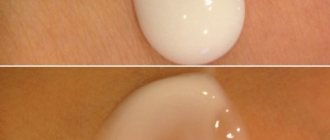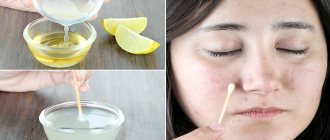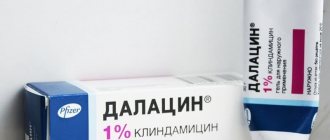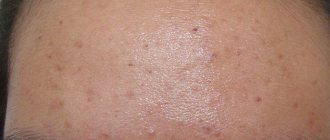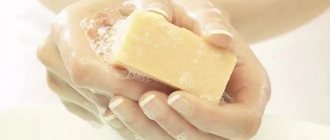- Erythromycin, acne tablets: application?
- Using Erythromycin Tablets for Acne
- Resistant acne and erythromycin
- Side Effects of Erythromycin for Acne
- Erythromycin dosage for acne
- General Benefits of Erythromycin for Acne
- Types of Erythromycin
- Precautionary measures
- Erythromycin tablets interactions
- Warnings
Erythromycin is an antibiotic in the Macrolide family. It is a widely used antibiotic that can be applied topically as an ointment or taken orally as a tablet. Erythromycin is used to treat many types of bacterial infections, including the respiratory tract, urinary tract, and skin.
Erythromycin is commonly used to treat symptoms of acne and pimples. Topical erythromycin is a popular choice for treating symptoms of acne to moderate acne (acne types: 1 - 3). Erythromycin tablets are sometimes used as a treatment for acne, but other antibiotics in the Macrolide family are often preferred for oral use because that they have fewer side effects.
There are a large number of clinical studies and patient reports that show that erythromycin may be an effective treatment for many people with acne. Antibiotic sensitivity testing indicates that the acne-causing bacterium P acnes is generally sensitive to macrolide family of antibiotics, including erythromycin. However, P acnes bacteria that are resistant to erythromycin and other macrolide antibiotics are becoming increasingly common in many regions of the world. People with acne symptoms caused by these resistant bacteria are unlikely to benefit from treatment with erythromycin.
The most common types of medications prescribed for acne are antibiotics because antibiotics are designed to kill bacteria. One option your doctor may consider is erythromycin acne tablets or ointment.
Composition and release form
This drug is available in several dosage forms:
- Pills;
- Ointment (external and ophthalmic);
- Lyophilisate (powder for preparing a solution).
The main and most important substance is Erythromycin , an antibiotic of natural origin from the group of macrolides. Its most important advantages include:
- Extensive spectrum of antibacterial activity;
- Extremely low toxicity;
- Effective penetration into the epidermis.
- High concentration in tissues.
This substance does not have photosensitivity, which means that you can be in direct sunlight during use without harming your skin.
Resistant acne and erythromycin
One of the common problems encountered when using erythromycin for acne is bacterial resistance.
This problem is inherent in all types of antibiotics, and erythromycin is no exception. This is what causes concern when taking erythromycin for acne.
Bacteria Can Adapt When taking erythromycin, there is a high chance that drug-resistant bacteria will develop over time. Although this is not as dangerous, it does mean that at any point during your treatment, erythromycin may stop working and a new treatment will be required.
Additionally, in very rare cases, it can lead to more serious problems of drug-resistant bacteria for other conditions. Because of this, no antibiotic should be taken without a prescription, and it is best to make sure you have exhausted all non-drug options before trying any one. or an acne antibiotic, including erythromycin.
To reduce the likelihood of this resistance, it is extremely important to take the drug at the same time each day. Failure to take the drug as prescribed (for an extended period of time as required by the prescription) will increase the likelihood of developing resistance.
Additionally, there is some evidence that combining erythromycin with benzoyl peroxide will also reduce the risk of developing resistance. Research at the University of Leeds in the UK has shown that combining these two acne treatments may improve the ability to use erythromycin in the long term.
Mechanism of action
Erythromycin is a substance in the form of a white powder that is poorly soluble in water, but very soluble in alcohol. It has a pronounced bacteriostatic effect, which means that bacteria stop developing and multiplying, and therefore their number stops increasing and the body can more easily cope with their destruction.
Pathogenic bacteria slowly develop an addiction to it, so this antibiotic can be used for a long time (three weeks) without losing its effectiveness.
If the medicine gets on the mucous membrane or in the eyes, rinse it immediately with plenty of water.
Using Erythromycin Tablets for Acne
Poll: When did your acne appear? (Number of votes: 4295)
I've been suffering all my life
It's been a couple of years now
About a few months
Recently
To vote, click on the desired answer. results
Erythromycin kills and slows the growth of acne-causing bacteria Unlike many other antibiotics for acne, erythromycin can be provided in either oral (tablet) or topical (ointment or cream) form Both can be used in parallel or separately to reduce bacterial buildup for acne.
In 1987, researchers compared the difference between tetracycline (the most common type of antibiotic to treat acne) and erythromycin. They found that both people had similar effects on acne, with approximately 80 - 90% reporting a significant reduction in acne accumulation within the first 3 months of the study.
Most studies comparing these two treatment options reported that acne and erythromycin had about the same effect on tetracycline in almost every case. The differences were largely insignificant between the two drugs.
Similar benefits were found in the topical erythromycin group A study conducted on a group of 253 patients found that those using topical erythromycin found a significant reduction in the number of acne lesions compared to those using other acne clearing methods.
However, some researchers believe that the effect of topical erythromycin on acne is different from oral erythromycin. In one study, the researchers claim that this effect is more of an anti-inflammatory effect rather than leading to a reduction in bacteria. Essentially, erythromycin does not kill bacteria, but rather prevents the bacteria from creating skin lesions.
Despite this, research has been fairly consistent in showing that erythromycin is a good choice for clearing acne.
In what cases do antibiotics only worsen the condition of the skin and cause new acne to appear?
Ointment
Erythromycin ointment is a good, budget-friendly product that, combined with proper care, will help you achieve the desired result. In addition to the main active ingredient, the composition contains petroleum jelly and lanolin. Apply it precisely to areas of inflammation in a thin layer, on previously cleansed skin.
Chatterboxes
In this section, we have collected perhaps the best recipes for erythromycin shakes, which have proven to be effective and safe when used correctly. And the additional antibacterial components that are present in the composition will speed up the cleansing of the skin from annoying inflammations.
The biggest advantage of preparing the product yourself is its low price with good efficiency and speed of obtaining the desired effect.
With zinc
To prepare you will need to take:
- Salicylic acid – 20 ml;
- Boric acid – 20 ml;
- Erythromycin (250 mg/tablet) – 4 tablets;
- Baby powder – 2 gr.
The antibiotic must be crushed to a powder and mixed with powder (which consists of 50% zinc oxide and 50% talc). Next, pour boric and salicylic acid into one bottle and pour the resulting mixture into it. Mix well and let it brew in the refrigerator for one day. Shelf life – 14 days.
With tetracycline
The combination of two mutually reinforcing antibiotics, supplemented with dimexide, allows you to achieve an amazing effect in a short time. Just try it and the result will impress you.
Erythromycin dosage for acne
Like other antibiotics, erythromycin should be taken exactly as prescribed by your doctor to prevent bacterial resistance and increase effectiveness.
Always follow your doctor's instructions. He may recommend a dose that is different from what other people take when treated with erythromycin. The dosage of the drug is always based on your height, weight, age, previous diseases and medical history, type of acne, brand of drug, etc. .
Typically, erythromycin tablets are taken one hour before meals, although some doctors state that it is acceptable to take it with food. Dosage is usually 250 to 500 mg per day, given in 2 to 4 doses per day. Your doctor may also recommend a different type of topical treatment. to supplement oral erythromycin.
Topical erythromycin is usually used twice daily, although your doctor may prescribe something different.
Use only the dose of erythromycin that your doctor prescribes. The National Institutes of Health recommends taking this drug at least one hour before meals or two hours after.
Avoid taking erythromycin with carbonated drinks and fruit juices. If you miss your scheduled dose of an erythromycin tablet, take it as soon as you remember. Skip the missed dose if it is close to your scheduled next dose. Do not take two tablets at once to make up for the missed dose.
Analogs
Analogues of erythromycin are usually prescribed in case of individual intolerance or ineffectiveness of this antibiotic.
Analogs include any antibiotic of the macrolide series. Also, in terms of effectiveness, they are overtaken by tetracyclines, but still they are weaker than macrolides, which are a generation higher.
In the table below you can see the compatibility of erythromycin with other antibiotics, and where there is a ++ , you can safely say that the antibiotic is similar. And when used together, their antibacterial activity increases.
If you want to supplement a mash or mask with an additional antibacterial component, thereby increasing its effectiveness, then consider exactly those drugs that are marked with two pluses.
Side Effects of Erythromycin for Acne
Erythromycin, like most antibiotics, is subject to side effects. Compared to tetracycline antibiotics, these effects can be considered milder, but there are certainly risks associated with the use of an antibiotic, especially an oral one.
There are very few known side effects of topical erythromycin. Most side effects are superficial level on the skin where topical treatments were applied, including skin redness, burning, itching, and peeling. An allergic reaction is also possible, although these allergies usually tend to be less severe (a more severe allergic reaction possible, but less likely due to the absence of the drug in the skin).
The most common side effects of oral erythromycin were gastrointestinal disorders. These included side effects such as:
- Diarrhea;
- Abdominal pain;
- Nausea;
- Vomit.
Erythromycin affects a hormone known as motilin. This hormone is responsible for moving food through the intestines to make room for future meals. Erythromycin causes your body to produce more of this hormone, which in turn leads to faster bowel movements, which is normal (although and not always) is the reason that erythromycin causes the gastrointestinal disorders listed above.
An allergic reaction is a rare but possibly dangerous risk of erythromycin for acne, with reactions ranging from mild hives and rashes to seizures and jaundice. Erythromycin can also cause yeast infections, although this appears to be less common than with tetracycline antibiotics.
Severe adverse (non-allergic) reactions to this type of drug are extremely rare. While erythromycin has been associated with severe adverse drug reactions such as toxic epidermal necrolysis, the likelihood of contracting these diseases is extremely low. It has also been associated with psychological reactions (such as nightmares), but the mechanism that causes these reactions is less clear.
As with any prescription medication, tell your doctor if you are taking any other medications in addition to using erythromycin for acne. There are some medications that are not compatible with taking erythromycin.
Erythromycin may also interfere with the way some oral contraceptives work due to the way the drug affects the intestines. It can increase the rate at which oral contraceptives (as well as other medications) are metabolized, meaning these drugs may leave your body too early, resulting in a failure to prevent pregnancy.
Topical and oral forms of erythromycin have several side effects. Dermatologists report that side effects of the topical form of Erythromycin tablets include dryness, eye irritation, flaky skin, burning sensation, oiliness, and hives.
Side effects of erythromycin tablets include nausea, diarrhea, vomiting, dizziness, stomach pain, fatigue, headache, skin rash, vaginal discharge and vaginal itching.
Other drugs containing erythromycin
The drugs listed below are highly proven to be effective, but their price is 3-5 times higher than regular ointment and can hit the average person hard.
Zenerite
This drug combines two active ingredients:
- Erythromycin;
- Zinc acetate.
As we already know, the first component has a pronounced bacteriostatic effect, and the second perfectly dries out inflammation and has an additional bactericidal effect.
Zenerite
Price from 600 rubles per package.
There is also an analogue on the market called zineriderm, which is extremely rare on pharmacy shelves.
Aknemix (Benzamycin)
A very interesting tool, with an equally interesting price. This drug combines two active ingredients:
- Erythromycin;
- Benzoyl peroxide.
Their complementary combination is very effective and allows you to quickly get rid of annoying inflammations.
However, the drug has two significant disadvantages:
- Insanely dry skin;
- Very high price - from 1700 rubles per package.
All medications described in the article are used externally, but to enhance effectiveness they are also taken orally. This drug has various contraindications and may cause unwanted side effects. Therefore, before use, consult your doctor to prescribe the dosage and duration of the course. Please take care of your health and do not self-medicate.
Erythromycin, acne tablets: application?
Erythromycin is a prescription drug that some doctors use to treat acne. It is known as a macrolide antibiotic, which means it falls under a different class of drugs than tetracycline antibiotics, which are also commonly used to treat acne.
Like other types of antibiotics, erythromycin is not specifically for acne. It is considered a narrow-spectrum antibiotic that is used to treat a variety of skin conditions, including acne.
Erythromycin is often combined with benzoyl peroxide in topical preparations (eg, benzamycin). Topical erythromycin is often combined with additional treatments (eg, oral antibiotics, retinoids, hormonal treatments, etc.) as part of a comprehensive acne treatment plan.
Erythromycin works similarly to penicillin, so doctors can prescribe it for almost any type of bacterial infection that needs treatment. As is often the case with antibiotics, erythromycin can be prescribed for both serious illnesses and less serious illnesses. One of the most common prescriptions is erythromycin for acne.
General Benefits of Erythromycin for Acne
Using erythromycin for acne may be extremely beneficial, at least compared to other antibiotics. While gastrointestinal side effects appear to be more common, the risk of a serious side effect is lower, and the drug appears to be well tolerated.
As usual, erythromycin may not clear up every type of acne or acne burst. It also does not clear up acne scars, so those with severe acne should expect some of their acne to remain. Plus, the risk of resistance is quite strong, so it's unlikely that you You will need to switch to a different type of antibiotic if the bacteria stop responding to erythromycin.
However, the use of erythromycin for acne has been a common practice for many years, and many doctors still recommend the antibiotic for those experiencing mild, moderate, or severe acne.
Acne occurs when dirt, oil, and bacteria clog pores in the skin. This causes whiteheads, pimples, or cysts to form. Some cases of acne require antibiotic treatment to kill bacteria and reduce the appearance of acne spots. Discuss the benefits and risks of taking erythromycin tablets with your doctor. determine whether it will improve your skin condition or whether its use on your face type and acne is not advisable.


